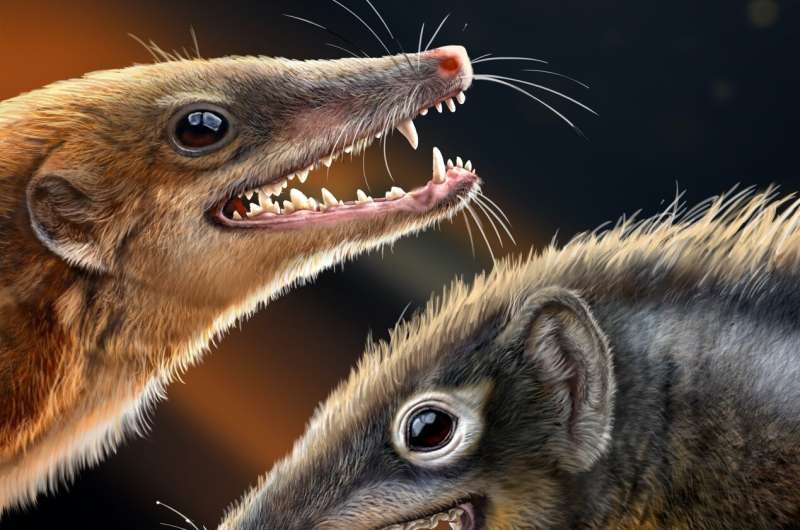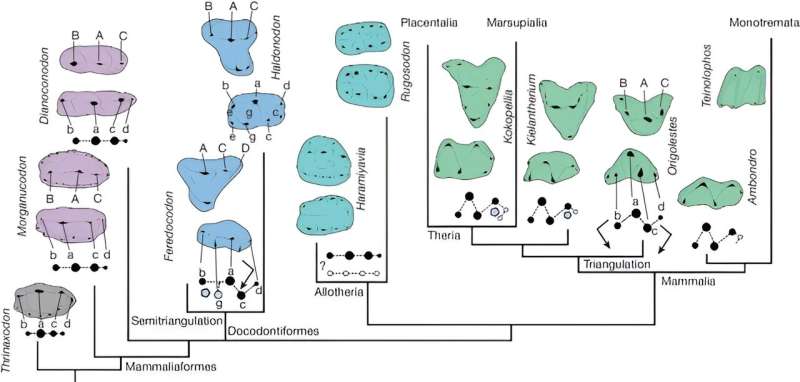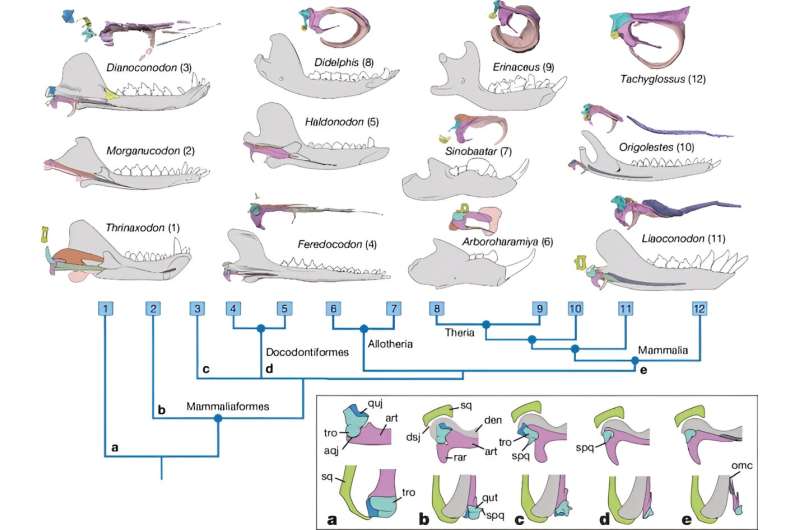This article has been reviewed according to Science X's editorial process and policies. Editors have highlighted the following attributes while ensuring the content's credibility:
fact-checked
peer-reviewed publication
trusted source
proofread
Two Jurassic mammaliaforms from China shed light on mammalian evolution

Mammaliaforms are extinct and extant organisms that are closely related to mammals. Studying mammaliaforms helps scientists understand the evolutionary processes that led to various mammalian features.
In two consecutive studies in Nature, Dr. Mao Fangyuan and Dr. Zhang Chi from the Institute of Vertebrate Paleontology and Paleoanthropology (IVPP) of the Chinese Academy of Sciences, together with colleagues from Australia and the United States, report two Jurassic mammaliaforms from China, revealing the earliest dental diversification, mandibular middle ears, and articular-quadrate joint transformation of mammaliaforms.
The studies provide key information about the evolutionary shift from reptilian jaw bones to early mammalian middle ear ossicles, presenting new perspectives on the early diversity of mammaliaforms and reshaping the early mammalian phylogeny.
Shuotheriids were Jurassic mammaliaforms with pseudotribosphenic molars that featured a "pseudotalonid" (a basin-like structure) in front of the trigonid in the lower molars. In contrast, molars in living mammals feature a tribosphenic pattern where the talonid is located behind the trigonid and "receives," i.e., interlocks with, the protocone of the upper molar for food processing/mastication.

Traditionally, shuotheriids have been phylogenetically grouped with "australosphenidans" (including the living monotremes), but this relationship is controversial and leaves some puzzling morphological, paleogeographical, and functional issues unexplained in mammalian forms.
In the first paper, the researchers examined two specimens from the Middle Jurassic Daohugou locality in Inner Mongolia and established a new genus and species of shuotheriid, Feredocodon chowi.
Based on the evidence of the complete dentitions, occlusal relationships, and the serial homology of the teeth, the researchers proposed a new interpretation: The pseudotribosphenic molars are actually homologous to the molar pattern of docodontans.
The results of phylogenetic analyses reconstructed from the revised dental characters suggest that a Morganucodon-like ancestor independently gave rise to three major groups of mammaliaforms: Docodontiformes (Docodonta and Shuotheridia), Allotheria, and Holotheria (symmetrodontans, therians, and kin).
The key feature of the tooth evolution in early mammaliaforms is that the molars, which arose from the ancestral triconodont pattern as in Morganucodon, became broader and more complex to accommodate more efficient food processing. However, the evolutionary processes of the three groups took place in different directions.

In the second paper, the researchers reported the mandibular middle ears (MdME) of two species—one being the shuotheriid Feredocodon described above and the other being a Morganucodon-like animal from the Early Jurassic Lufeng Biota, named Dianoconodon youngi.
The two species showed some new morphological features that support the evolutionary shift from jaw joint bones to middle ear ossicles in early mammals. The mandibular features suggest that one of the dual jaw joints in the ancestral Morganucodon, the articular-quadrate joint, lost its load-bearing function in Dianoconodon, while the mandibular middle ear was better adapted for hearing. The postdentary bones of the shuotheriid species are more advanced, showing characteristics suitable for a purely auditory function.
The new evidence provides insight into how the ossified Meckel's cartilage functioned as a stabilizing mechanism and reveals that the medial displacement of the quadrate relative to the articular bone played a critical role in the transformation from a load-bearing jaw joint to the middle ear structures.
This research strongly supports and enhances the view that the gradual evolution of the mammalian middle ear is a classic example of vertebrate evolution.
Feredocodon chowi and Dianoconodon youngi are named in honor of Professors Minchen Chow (Zhou Minchen) and Chung-Chien Young (Yang Zhongjian), respectively.
More information: Jin Meng, Jurassic shuotheriids show earliest dental diversification of mammaliaforms, Nature (2024). DOI: 10.1038/s41586-024-07258-7. www.nature.com/articles/s41586-024-07258-7
Jin Meng, Fossils document evolutionary changes of jaw joint to mammalian middle ear, Nature (2024). DOI: 10.1038/s41586-024-07235-0. www.nature.com/articles/s41586-024-07235-0
Journal information: Nature
Provided by Chinese Academy of Sciences





















